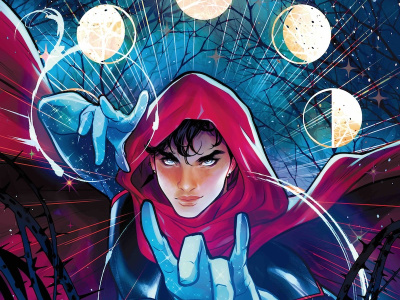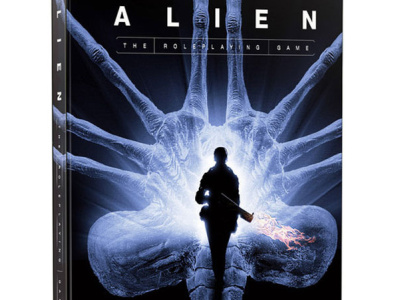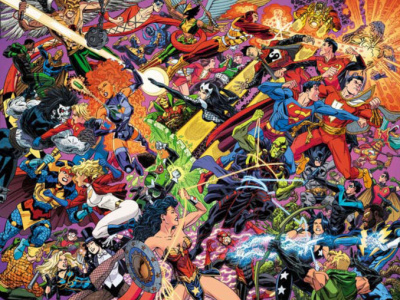Federal Court in Madison, Wisconsin was the setting for high drama today, as two of the biggest creators in pop culture crossed swords in a high stakes legal battle over a deal gone bad. Neil Gaiman (and his company) filed the suit in January (see 'Miracleman Heads to Court') against Todd McFarlane, three of his companies, and Image Comics over work that Gaiman did for comics published by Image, the secondary rights associated with his work, and money owed. An attempt had been made to settle the dispute by swapping rights for Gaiman creations in the Image comics for Miracleman rights purchased by McFarlane in the Eclipse bankruptcy, but the deal had collapsed (see 'Why Gaiman Sued McFarlane').
Today's portion of the trial began with opening arguments by attorneys representing Gaiman and McFarlane, and continued through testimony by both creators. When the trial recessed for the night, Gaiman's side had completed the presentation of their case (including Gaiman's testimony), and McFarlane was still on the stand being cross-examined as part of the defense portion of the trial.
The courtroom is a relatively small, modern, well-lit room on the third floor of the blue Harvestore-like federal courthouse in downtown Madison. The court is presided over by Judge John Shabaz, a legend among Madison attorneys and anyone who has seen him run a trial. His is probably one of the fastest courts in the country to complete trials, with his decisions guided by an unrelenting devotion to the expeditious justice that is so often denied those that come before the federal bench. He is brusque, imperious, and known for mercilessly dressing down attorneys that come before him unprepared, that delay a case, or that question his decisions. His craggy visage is straight out of central casting, and when he glares over his glasses at an attorney that's incurred his wrath, his look could melt steel.
In today's proceedings, attorneys for both sides took occasional blasts from Shabaz. When Gaiman's attorney fumbled for an exhibit while cross-examining McFarlane, Shabaz was curt: 'You've taken 15 minutes to set up for this witness already. Move on!' Gaiman's attorney had to abandon the line of questioning. And when McFarlane's attorney said he understood after a Shabaz ruling that he'd disputed, Shabaz gave him an 'I don't think you do' for good measure, after which the attorney wisely stayed mute. But there were also moments of humor in the judge's exchanges with attorneys, for example when he dryly told one of McFarlane's attorneys (who had made a couple of unsuccessful objections to shut down a line of questioning by Gaiman's), 'When you find the right objection, I'm sure you'll be sustained.'
Gaiman came to the trial dressed in a white shirt, black tie and black sweater; McFarlane in a black short-sleeved t-shirt and black trousers. Both were accompanied by numerous attorneys, with McFarlane appearing to win the war of numbers. We saw at least four attorneys representing Gaiman in the courtroom, with somewhere north of a half-dozen working for McFarlane. This legal firepower is one indication of the massive financial resources that are being devoted to this fight by the two creators, who both appear to care less about the money involved (which is substantial) than other issues. This is a jury trial, with an all-female jury of a wide variety of ages, from their 20s to 50s or 60s.
The basic facts are not in dispute. The business relationship between the two creators began shortly after the formation of Image in 1992, when McFarlane decided to hire four of the biggest-name writers he could find to write guest issues of Spawn, which he'd written himself up to that point. That decision was made in response to criticism that the artist-driven Image titles were poorly written. The four creators--Alan Moore, Gaiman, Dave Sim, and Frank Miller--each wrote one issue (beginning with Spawn #8), and were paid $100,000 each. In the issue that Gaiman wrote, #9, three new characters were introduced: Medieval Spawn (who did not have a name in the issue but was referred to as 'old-time Spawn' in the script), Angela, and Cagliostro.
There were no written contracts between Gaiman and McFarlane or any of his companies; in fact, when the deal was originally struck, both relied only on McFarlane's promise to treat Gaiman 'better than the big guys do.' The $100,000 payment amount was decided upon by McFarlane later, who decided to pay each of the writers the same amount because he expected them to compare notes and didn't want any of them upset at being paid less than another. Neither side appears to dispute that that amount represented the highest amount ever paid to Gaiman to that point (and probably ever) for a single issue of a comic. Sales responded, and issue #8 sold 1.1 million copies and #9 around 1 million copies, compared to the 600,000 copy sales on Spawn #6.
Response to one of the new creations, Angela, was sufficient to warrant the production of an Angela mini-series. To provide some backstory for the mini-series, Gaiman scripted a three-page sequence which he asked McFarlane to include in an issue of Spawn, which McFarlane did in issue #26. The Angela mini-series was published and collected into a trade paperback, which has gone through more than one printing. Medieval Spawn and Angela were produced as toys by McFarlane's toy company, and generated over $5 million (wholesale) in revenue. Other uses were also made of the new characters, including appearances in the animated Spawn series produced for HBO.
It was the secondary uses and trade paperback reprints that were actually the source of much of the dispute. As those uses became more important, Gaiman asked for a written agreement spelling out his rights and compensation. Both parties agreed that the original oral agreement, that the compensation and rights would be at least as good as that given by major publishers (DC, Gaiman's primary publisher, was the model) would be the guiding one. But the effort to reduce the agreement to writing proved problematic. The parties met to try to work out an agreement, and ultimately decided to incorporate the Miracleman rights that McFarlane had purchased out of the Eclipse bankruptcy in an exchange for Gaiman's rights to Medieval Spawn and Cagliostro, as well as working out agreed-upon percentages for many of the uses of the works. Gaiman sent McFarlane a fax laying out what he understood to be the terms of a final agreement, and in August of 1997, McFarlane provided a royalty statement for almost all of the uses of the characters and work created by Gaiman and a payment (payments to Gaiman totaled another $110,000 after the original $100,000). McFarlane also sent Gaiman some of the Miracleman materials that were to be part of the trade.
But around this time McFarlane came to believe, based on his conversations with DC VP-Managing Editor Terry Cunningham about DC's handling of royalties on derivative characters, that Gaiman had overstated the terms of his DC contract and stopped trusting him. And Gaiman ultimately came to believe that McFarlane was attempting to claim ownership of his work and use it without the compensation and credit he deserved. Although negotiations continued into 1999, the parties would never again be as close to a resolution as they were in August of 1997. As Larry Marder, who was attempting to negotiate an agreement on McFarlane's behalf, put it, the dispute then became a situation in which 'a jury will have to decide whether to believe an Englishman or a Canadian.'
For full coverage of the trial, see the rest of our articles, most written after this one:
The damages phase and post-mortem--
'Gaiman Keeps Share of Spawn Characters'
The verdict --
'Gaiman Sweep!'
McFarlane's cross-examination, closing arguments, and the case goes to the jury --
'Jury's Out on Gaiman vs. McFarlane.'
The first day ran long, so we broke our coverage into two parts:







